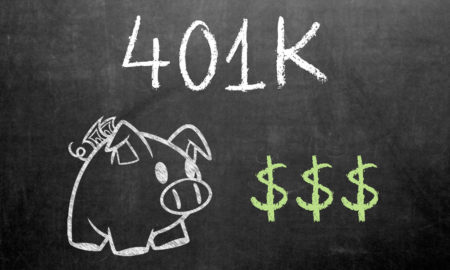

Deprecated: Implicit conversion from float 1758136885.174032 to int loses precision in /www/investmentzen_357/public/blog/wp-content/plugins/intelly-related-posts/includes/classes/utils/Logger.php on line 93
Deprecated: Implicit conversion from float 1758136885.174221 to int loses precision in /www/investmentzen_357/public/blog/wp-content/plugins/intelly-related-posts/includes/classes/utils/Logger.php on line 93
We’ve all heard statistics about how bad off we are when it comes to personal finance. It’s easy to absorb those stats and become apathetic, thinking there’s nothing we can do to improve our financial lot in life.
I understand that sentiment. I saw people in my former day job unwilling to make changes that would help them financially or improve their investment outlook.
Change may be painful but it’s not impossible. One small change leads to another soon you’ll set your course in the right direction. You just have to begin. Use these stats as your starting point for lasting change.
1. 39% Of Americans Under 30 “Invest” In Cash
Having a portion of your investments in cash is a part of a healthy portfolio. It can be used to take advantage of an opportunity, amongst other things. Having too much of your investable assets in cash, however, can lead to problems.
A recent Bankrate report shows that 39 percent of those under 30 keep funds they don’t need for at least ten years invested in plain cash, meaning it’s not in the stock market.
There is cause to be concerned with such a statistic. Not only does it lose out to inflation, but it also means you’re not taking advantage of gains possible in the stock market.
“By not investing into securities that can generate returns greater than inflation, your real return is negative. You are essentially realizing a negative real return by not participating in the markets. This might not be apparent in the short-term, but it is absolutely a real cost,” says Ryan Hughes, founder of Bull Oak Capital.
Investing in cash may feel safe, but it can be just as risky, if not more so than investing in the stock market.
Counteract this temptation by creating ‘buckets’ for your medium and long-term needs that you can use to direct your investing decisions and funnel more towards the stock market so you can take advantage of potential gains.
2. 51% Of Americans are Putting off Major Financial Decisions
A 2015 report from the American Institute of CPAs (AICPA) reveals that 51 percent of Americans are putting off decisions about everything from higher education to buying a home to retirement. The study found that a lack of savings is driving the indecisiveness.
If you find yourself in this boat, identify what takes top priority and attack it. Align that with your medium and long-term needs above and you will be empowered to make decisions.
3. 21% Of Americans Over 75 Have Mortgage Debt
Mortgage debt is considered “good” debt, but is it good to have when you’re heading into retirement? A 2015 USA Today article indicates that 21 percent of those over 75 have mortgage debt. Even more concerning, those aged 55-64 have an average mortgage debt of just under $110,000.
This is particularly concerning as that should be a time in your life where you’ve paid off your mortgage and focusing entirely on retirement planning needs. Debt can only impede that.
“…debt is the most significant burden and obstacle to a secure retirement that I encounter,” says Robert Henderson, President of LWM Wealth, LLC.
Facing a significant mortgage debt while approaching retirement is a hurdle, but it can be overcome. Refinancing to a lower payment or downsizing may enable you to kill your mortgage before retirement. This will provide cash flow in retirement, which according to Henderson, “provides freedom, financial flexibility and peace of mind in retirement.”
Being able to put that excess cash into other investments as opposed to one that provides little to no return is the best bet to retire debt free and grow your overall net worth.
4. .75% in fees equates to a 30% smaller nest egg in just 20 years
Too many people pay way too much to invest. The investing world is rife with fees that eat into your returns. The SEC shows a difference of .75% in fees equates to $30,000 less out of an example portfolio of $100,000 over a 20-year span.
Put another way, a difference of .8% over 30 years will mean the higher cost fund being 23 percent behind. The more money you have, the more that will be eaten away.
With the average actively managed mutual fund charging .70% and the average ETF charging .43% – and in many cases below .10%, such as in the case of Vanguard, you can begin to see the difference. If you hire a financial advisor they will add in an additional fee as well.
In the age of robo-advisors like Wealthfront or Betterment, or even easy DIY portfolio management through a discount broker, there’s no need to pay so much for your investment needs.
In reality, paying too much just lines someone else’s pocket and not yours.
5. 61% of adult parents would rather talk to their advisors than their adult children
Mixing family and money can be a tricky concept. You can’t guarantee that what a family member will have the same financial mindset you do.
As such, it’s not surprising that a 2014 Fidelity report shows that 61 percent of adult parents (those over 55) are more comfortable discussing things with their advisors than they are their adult children (those over 30).
It’s great that adult parents seek out help when they need it. That’s a vital part to legacy planning, however it’s equally important to involve adult children in that process. With the upcoming transfer of wealth from Baby Boomers to their children, it’s important to smooth the process.
This can be improved upon by having clear communication between parents and children. Not only will this help children know of their parents wishes, it can put them on the same page.
6. If you don’t start saving until 45, you will need to save 3 times as much as if you start at 25
It can be difficult to start investing when you’re young. Not doing so, however, will cost you. The Center for Retirement Research at Boston College reports that if you wait to start saving for retirement until 45, as opposed to 25, you need to put away three times as much.
The report shows those at 25 should put away 15 percent of their earnings for a comfortable retirement, whereas those at 45 must put away 44 percent.
You may not believe the statistic. It points out the key advantage to investing in stocks – time. You may feel like you can’t afford to invest when you’re young, but you just need to start; with services like Wealthfront or Betterment that let you start investing with $500 or less there’s no reason not to.
7. Commission-Free ETFs Cost You More Than You Think
Commission-free ETFs seem like a good thing, but does free always mean cheaper? Wealthfront reports that Schwab made over $200 Million in fees on such ETFs in the Q2 of 2015 alone.
Joseph Carbone, Jr. CFP®, AIF®, Managing Director of Focus Planning Group explains why some ETFs cost more – “Review the underlying expense ratio of the ETF and compare it against the commissionable ETF in the like category. Depending on the size of the investment, the investor will save for example $8.95 per trade, but the expense ratio might very well be more expensive in some cases.”
Not all commission-free ETFs are more expensive, but they do need to be looked at closely to ensure it’s truly an investment that will lower your costs. If not, you may defeat your overall goal.
Additionally, you want to make sure the given ETF is not thinly traded and is truly a fit for your needs and portfolio.
8. 90% of Actively Managed Funds Underperform Passive Funds
CNBC reports that actively managed funds underperform passive funds 87 percent of the time on a five year timeline ending in 2015, and 82 percent of the time on a ten year timeline.
Actively managed funds aren’t all bad, per se, it’s just difficult to outdo the market on a regular basis. A consistent record of underperforming the market will have a negative impact on a portfolio. While not exciting, a portfolio of passive index funds suits the needs of many.
That being said, there are instances where actively managed funds will make sense. “Instead of looking at performance, think about what other value an actively managed fund is providing – for example: socially responsible investment screening, exposure to or knowledge about lesser known asset classes, or an investment philosophy that tries to limit downside risk, among others,” says Aaron Hatch CFP® and co-founder of Woven Capital.
Regardless of the type of fund you choose, it literally pays to do your due diligence to find one that’s low in cost and consistent performance.
9. We Lag the S&P by Over 6%
When we allow our emotions to dictate our investing decisions, ruin is likely to ensue. It’s not surprising that Blackrock reports the average investor, over a 20 year span ending in 2015, underperformed the S&P 500 by six percent. In fact, the return over that period was slightly less than inflation.
This stems from one main issue – psychology. We see losses, we listen to the news, etc. and we pull out of the stock market. That behavior locks in losses and misses upswings.
“Do not look at the dollar value of your investment portfolio on a daily basis. This can drive you crazy. Instead, I would argue that you should only look at their long-term portfolio on a monthly or even a quarterly basis,” says Hughes.
Establishing an investment plan to guide your decision-making and avoiding constant watching over your portfolio are two of the best ways to guard against rash decisions.
10. Our Average Retirement Account Balances Nearing Retirement Will Generate Less Than $400/month
A 2015 report from the Center for Retirement Research at Boston College shows the average combined (401(k) and IRA accounts) retirement account balances for those nearing retirement is $111,000. This results in just under $400 in monthly income in retirement, which is not nearly enough.
This is obviously a relatively concerning statistic. It should cause us to save and invest more actively. We should look for ways to cut expenses and increase investment opportunities. That can be as simple as downsizing mortgage payments to reducing investment costs.
The two combined will free up more to save and, thus, grow. A great tool to help manage this activity is Personal Capital, which is free of charge and can help you monitor your net worth.
11. 40% of Stocks Have Lost 70% or More Since 1980
The stock market has seen several major declines over the past few decades. It’s not surprising that JP Morgan reports that 40 percent of stocks have lost 70 percent or more of their value since 1980.
I saw it every day during the Great Recession as I spoke with investors holding stocks that were shells of their former selves.
There is one simple way to protect against such a loss – diversification helps you ride out storms when one investment is doing poorly as the others will hopefully balance it out. Understand though that just buying different stocks doesn’t make you diversified.
“A mistake some investors make is thinking that by buying ten individual stocks, that they are diversified. Unfortunately, that is generally false. It is better to have a mix of stocks and bonds, and perhaps even real estate, natural resources or commodities.
“When thinking about stocks it is good to have a mix of investments in big companies and smaller companies, domestic companies and foreign companies, companies in tech coupled with utility companies, and retail companies, etc.,” says Hatch.
You can accomplish this in many ways from Target Date funds, to using a robo-advisor to manage a balanced portfolio of index funds, or selecting broad based index funds through a discount brokerage.
12. Dividends Play A Bigger Role Than You Think
Dividend paying stocks have been a popular investment option over the past decade. Thanks to the anemic interest rate climate, investors have fled to them as a means to get a return. Dividend paying stocks aren’t typically viewed as sexy or exciting as they typically come from older companies.
It’s not surprising, however, that Motley Fool reports just how significant of a role dividends play in investing. From 1927 – 2012, reinvested dividends made up:
- 42 percent of large-cap stock returns
- 36 percent of mid-cap stock returns
- 31 percent of small-cap returns
Dividend paying stocks also tend to outperform their non-paying counterparts year over year. If you don’t know where to start with dividends, index funds are a good place to begin.
Bottom Line
Many of these investing statistics are concerning. That does not mean it has to drive you to despair. In nearly every instance, a few simple changes can reverse the course in your favor and set you down your desired path.


































2 Comments